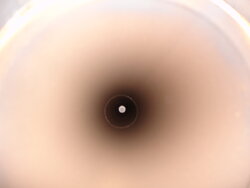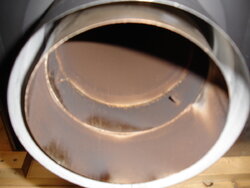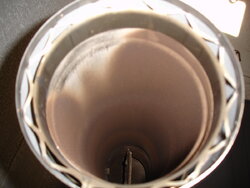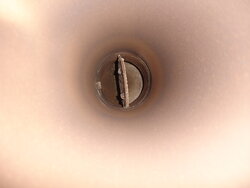ToltingColtAcres
Member
What's your flue setup like? You definitely can control more by limiting the secondary air inlet. I have a magnet just in case I start getting more than 650.
I'm in hour 5 of the burn and just opened the air all the way. Temp is about 375.
I have about 6' of double-walled stove pipe with a 90 elbow into the wall. There it joins a Metalbestos cleanout T and is pretty much a straight shot (with a couple of small bends) about another 15' or so out the roof, tucked behind the house's regular chimney.
Last year I installed a flue pipe key to try and control the N/S loads. It didn't seem to make much difference. For example I can watch the flames, close the key, and I will see the flicker will slow down slightly, but not enough to really make a difference in the burn. As opposed to loading E/W, when I close the air intake and I will shift easily to nice lazy rolling flames.
Last nite before I went to bed at 11:30 I raked all my coals down even, and loaded the stove E/W. Waited until everything was engaged, rolling nicely, turned my air all the way down and had a nice burn going. Got up at 6:30 this morning and was down to coals, stovetop and flue temp was around 300.. I had enough coals I could just open the air, throw a log in, and watch her take off again. Some mornings depending on the wood species I'll have more ash and less coals, and then I have to rake things out a bit. I do find any significant ash accumulation seems to choke the airflow of the stove, especially when accumulated towards the front of the stove. This stove definitely loves to run N/S. I will use my small shove and push the ash and coals away from the front lip a little to give the air "room" to flow out, throw a few small splits N/S to facilitate air flow with a couple of larger logs E/W, and she'll get going again.
I definitely love the stove, she's an "easy keeper"


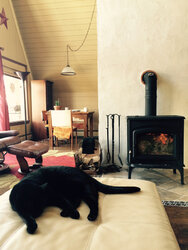
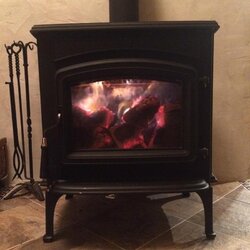
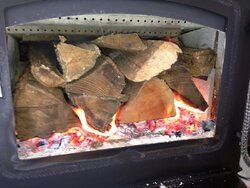
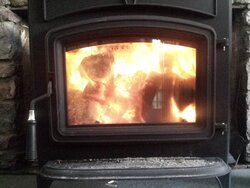
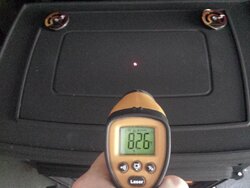
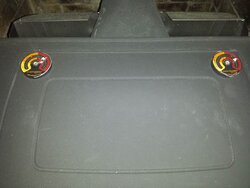

 !
!